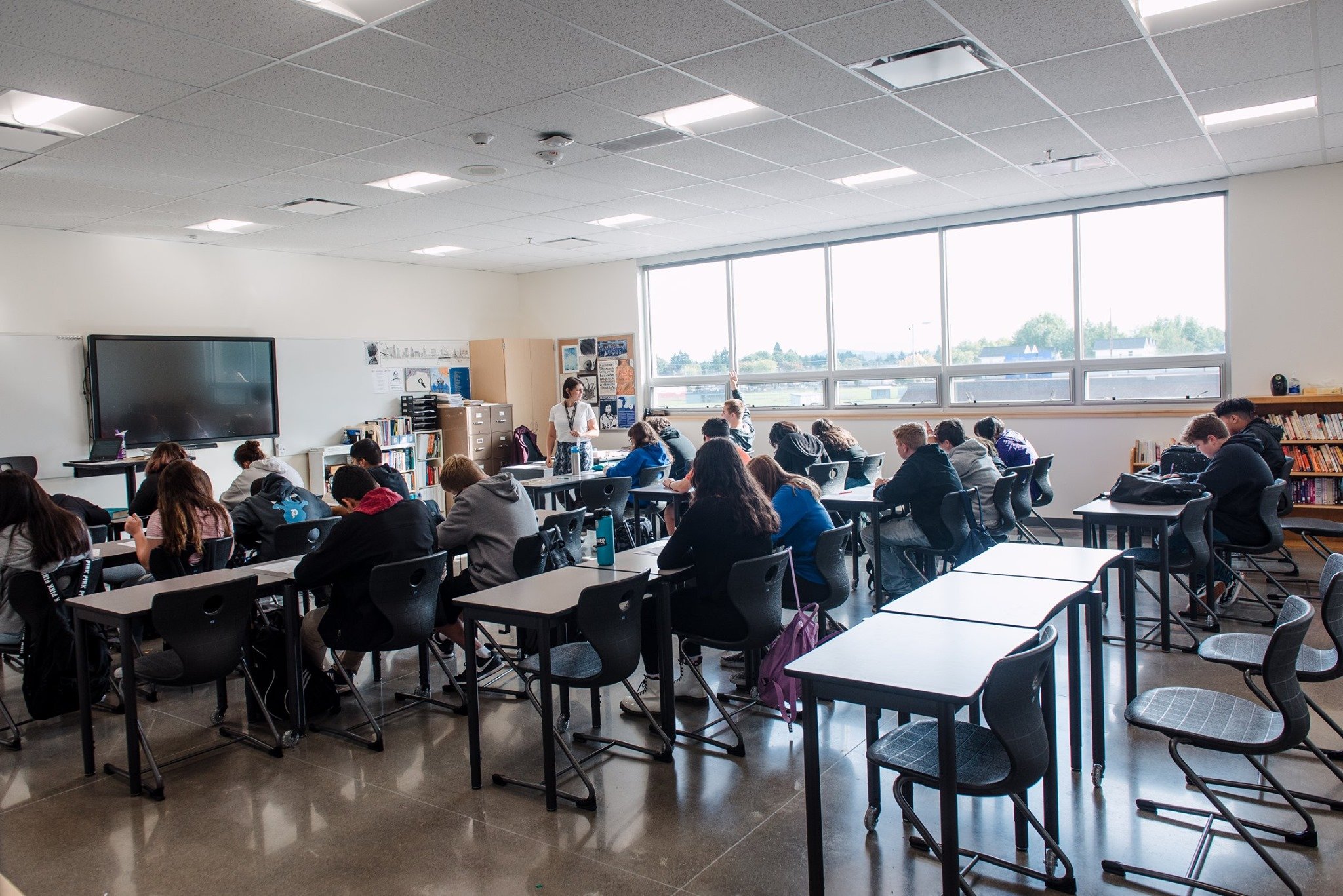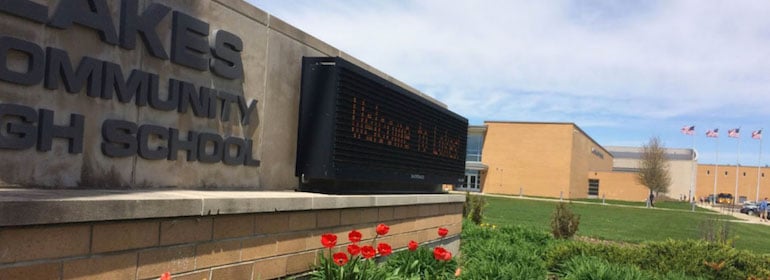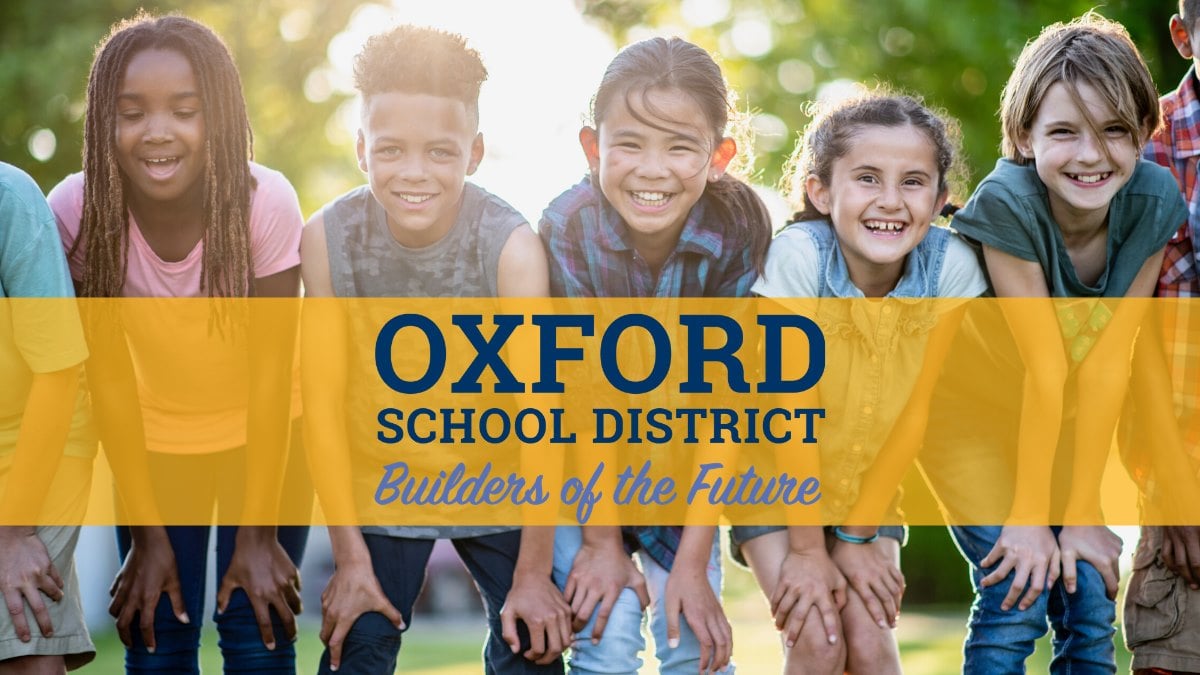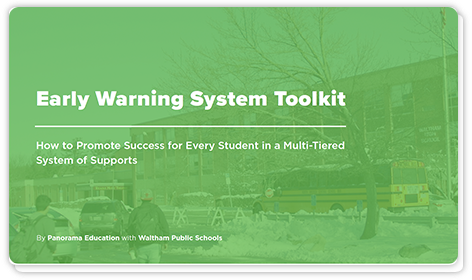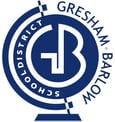 At Gresham-Barlow School District (GBSD) in Oregon, we strive to know every student by name, what they're interested in, and where they may need support. We hold ourselves accountable to this goal because we know that preparing each student for career and life success depends on it.
At Gresham-Barlow School District (GBSD) in Oregon, we strive to know every student by name, what they're interested in, and where they may need support. We hold ourselves accountable to this goal because we know that preparing each student for career and life success depends on it.
Our district's overarching mission is to develop culturally responsive graduates who will thrive in an ever-changing global community. Our "Portrait of a Graduate" stems from this mission and represents the GBSD community's collective vision of what our graduates should look like.
The portrait consists of six learner profiles: Independent Lifelong Learner, Adaptable Collaborator, Compassionate Communicator, Responsible Creator, Open-Minded Critical Thinker, and Globally Aware Community Member.
With these exciting new standards and expectations, the next step was to create strong internal supports that would guide us towards this outcome for every student. As the Executive Director of Innovation and Partnerships at GBSD, I began to investigate solutions that would help us implement a district-wide multi-tiered system of supports (MTSS). We knew we needed a robust data system -- and that's when we found Panorama.
Panorama is our early warning indicator and intervention system of choice. It brings together the best of early warning indicators, Response to Intervention (RTI), and Positive Behavioral Interventions and Supports (PBIS) to equip staff with the data they need to implement MTSS.
Now, our schools are able to proactively identify students who need support, apply interventions, and track progress in one place. Panorama helps us get out in front of students and groups of students who are falling off track before we have to be in reaction mode. We're also able to understand if our efforts are making a difference at the individual student, school, and district levels.
Early Warning Indicators and Intervention Tracking in One Place
As we work to ensure that every student succeeds, our schools need to have access to data to determine the root causes behind a student's struggles. We can't operate on anecdotal evidence or beliefs. In order to understand what we -- as adults in the building -- can do to increase student engagement and improve outcomes for all students, the data needs to paint the full story for every student.
At GBSD, we are beginning to gather school climate and culture feedback from families and students to inform school-wide Tier 1 supports. When it comes to delivering targeted supports for individual students, Panorama is our tool for combining multiple data points -- across academics, attendance, and discipline -- to tell us what might be happening with our students.
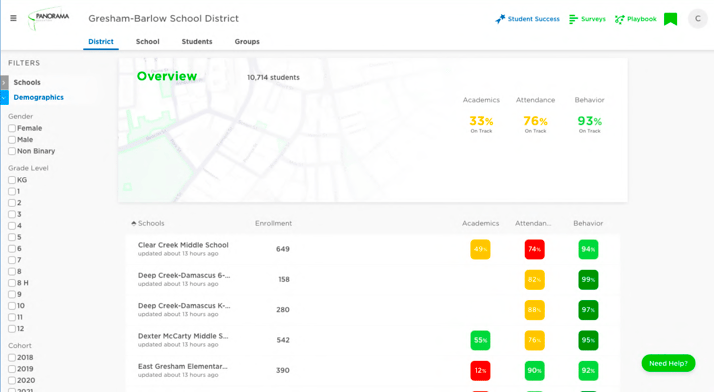
We are beginning to use those data points and Panorama's early warning indicators to spur preventative action when students show signs of struggle. We'll be able to answer questions like: How engaged and welcomed are our students and families feeling at school -- and, on top of that, how well are students doing academically? Which students are struggling, and why? Which students are experiencing chronic absenteeism, and why?
It's extremely valuable to have a system that not only gives a holistic view of student needs, but also lets us record and track our interventions as a result of the data in one place.
Analyzing Data Through an Equity Lens
At GBSD, it's also critical that we orient our early warning system efforts around promoting equitable outcomes for every student. Within our MTSS, we dig into our Panorama data through an equity lens to understand how we can be more equitable and inclusive in our practices as adults. Much of our work focuses on historically marginalized students to ensure we don't leave any student behind.
One way we do this is by using Panorama's powerful filters. We're able to filter our students by race, gender, and other demographic descriptors so we can look for gaps in either access, opportunity, or outcomes. Then we can hone in on those students who need more support or individualized attention. Without access to this data, we would not be able to work as proactively and quickly to deliver resources.
"Panorama helps us get out in front of students and groups of students who are falling off track before we have to be in reaction mode. We're also able to understand if our efforts are making a difference at the individual student, school, and district levels."
Working With the Right "End Game" in Mind: Career and Life Readiness
We're also starting to use our early warning indicator and intervention systems to predict which students are on track for adult success -- not just on-time graduation. At GBSD, high-school graduation is just a benchmark along the way. Our end game is career, adult, and life success.
That's why we're beginning to look for new post-secondary metrics that will hold us to that higher standard. We're analyzing different thresholds and data points to know if students are on track for adult success, and then helping students build pathways based on their own interests and skills. We're hoping that our intervention tracking systems support that end game vision, allowing students to set their sights on future career success.
Carla Gay is the Executive Director of Innovation and Partnerships at Gresham-Barlow School District in Oregon. In this role, Carla develops systems to ensure equitable access and career and life success for GBSD students.


